- Home
- James David Victor
A I Apocalypse
A I Apocalypse Read online
A. I. Apocalypse
A Valyien Far Future Space Opera
James David Victor
Fairfield Publishing
Copyright © 2019 Fairfield Publishing
ALL RIGHTS RESERVED. Except for review quotes, this book may not be reproduced, in whole or in part, without the written consent of the author.
This story is a work of fiction. Any resemblance to actual people, places, or events is purely coincidental.
Contents
1. He’s Gone
2. Interlude I: Ponos-Omega, Disturbed
3. Eliard, a Strange New Land
4. Cassie, master/slave
5. Eliard, Home at Last
6. Cassandra’s Apologies
7. Eliard, It Watches
8. Cassie’s Ultimatum
9. Old and Future Friends
10. Back
11. The Moral of this Tale
12. Test Subject
13. Not What it was Meant to be
14. Choices
Thank You
1
He’s Gone
“He’s gone,” House Archival Agent Cassandra Milan repeated, this time in a softer tone than last time. The silence of the ziggurat around them made her words sound small and alone.
The leaping, mechanical creations of the alien hybrid warcraft Alpha far above their position had stilled, their attacks ceasing abruptly as soon as Eliard had fallen through the Valyien gate.
Gate. Door. Whatever the drekk you call that thing… The blonde woman shot a dark look to the top of the dais behind which her dissolute company sat, where the four black, strangely-carved and whorled pillars, almost like organic shapes, had fallen into a stolid lifelessness.
Less than a watch before, as the alpha spider-drones had attached, the pillars had been glowing with a strange ethereal aura; opalescent whites, shot through with warp plasma’s purple, red, and blue, formed between their corners a field that shouldn’t exist. No one could stabilize warp plasma, this much the highly-trained House Archival agent knew. You could regulate the energy transfer and combustion rate between matter and anti-matter, but you couldn’t stabilize it—allowing it to exist within its own steady state, free from decay or explosion.
At least, you couldn’t according to the contemporary Imperial Coalition. Not to normal science. Not to human science.
But what sat above them—indeed, everything built around them—wasn’t human. Instead, it was built by long-dead race called the Valyien, a galaxy-spanning super species that had dominated and enslaved every sentient race they found. When they eventually fell in the ancient wars fought against their adversary the Q’Lot, the Valyien had left behind a scattered and complicated legacy of artifacts and ruins, into which the eager humanity had grown.
It was by dissecting and jury-rigging sites like these that the Imperial Coalition had discovered how to harness warp plasma to power their ships. And it was by resurrecting the relics that the human military company Armcore had found in sites such as these that they had played a part in creating the machine intelligence that was attacking them.
Alpha. We should have destroyed it when we had the chance… Cassandra scowled, looking not at the stilled spider-drones that surrounded them, but instead at her sand-scuffed shoes. It was hard to not feel responsible for what their situation had become.
“I had held that stars-be-damned calculator in my hands,” she muttered in a conversation with only herself. Her superiors in House Archival had asked her to steal the hybrid intelligence that Armcore had created. She had succeeded, with the help of the Captain Eliard and his crew of the Mercury Blade.
And I could have put an energy bolt through that thing when I had the chance… Cassandra cursed herself, although she knew why she hadn’t done that: those weren’t her orders. Back then, back before Cassandra had died and been resurrected by the ancient Q’Lot, Cassandra herself had been as controlled and loyal to her House Archival tutors as the spider-drones opposite her were loyal to what the Alpha program had become above them.
“…” her nearest companion didn’t say.
Cassie’s nearest companion was the mutant known as Argyle Trent. He had once been an Armcore research scientist who had experimented with Q’Lot biology on himself, but now he was a pale, ghoulish version of a man with small, bug-like eyes and two folded-back claws like a praying mantis instead of arms. Although when she had first seen him she had been sure that he was an enemy, he had become an almost friend during her treatment by the third of their party—the tall and gangly Q’Lot who sat awkwardly on the steps. It was no wonder that the thing appeared awkward, as it was easily over eight-feet tall and elongated, vaguely humanoid in general appearance, apart from the same hairless and ghoulish flesh that reminded Cassie of some strange sea creature. Added to this strangeness were the two extra midriff arms—smaller versions of the giant claws that Argyle Trent boasted—as well as the face that ended not in a mouth, but in squid-like tentacles.
“If that thing is agreeing, you should have put an energy bolt through Alpha when you had the chance. Heck! I would have helped you pull the trigger!” said the fourth and final prisoner: Irie Hanson, the Chief Engineer of the Mercury Blade. She was the shortest of all of those seated, but also clearly the angriest.
Cassie nodded miserably. “Not that it matters now, I suppose…”
“No…” Irie agreed, shuffling across the step that she had been sitting on towards Cass. There was the slight thrum of electronic machinery—if that is what they are powered by, the agent thought—as the spider-drones tracked Irie’s movements.
Cassie froze. “Aren’t you scared?” she hissed at the engineer.
“Petrified,” Irie agreed, giving their guards a dark look. “But if there is anything that I have learnt in all my years of mecha work, you can’t let them bully you around…”
Alpha’s self-created spider-drones had kept pouring into the ziggurat, seeded into the atmosphere of the desert planet, Esther, by the Alpha-vessel directly. Cassandra and the others had been locked into a fierce battle for their lives as they had failed to shut down the warp gate—one of the very portals that the ancient Valyien were somehow, mysteriously, using to manipulate the Alpha machine intelligence above. Cassandra didn’t understand the science of it, only that the military company, Armcore, had made some terrible mistake when they had tried to use old Valyien technology to create a new breed of sentient machine intelligence—far superior to the humans’ already sophisticated house artificial intelligences.
Somehow, the creation, and more importantly her failure to contain Alpha, had led to some sort of portal back through to this ab-universe, this pocket-dimension, this other-place which the ancient alien species had learned to travel to.
“Did we win?” Cassandra muttered to Irie, nodding to the silenced pillars behind them. She had come here thinking that they would destroy the gate physically—maybe break up the pillars or the dais, or even the entire ziggurat itself. If they had wanted to stop the warp gate, they had succeeded, but it had only happened when Eliard had fallen through the gate and vanished.
After Eliard’s disappearance, Cassandra and the others had continued to fight the drones. There were still blast marks and tiny fragments of spider-drones they had scattered. But the Alpha-vessel had kept on manufacturing them and dispatching them at a dizzying rate which the two humans and two something elses had never been able to beat.
“As soon as Eliard went…through…” Irie grimaced. “…they changed.” She nodded at the spider-drones.
Cassie nodded. “They were no longer trying to kill us, just swamp us,” she murmured, trying to reason what that meant with her high degree of analytical training.
The spider-drones had bee
n trying to kill us to stop us getting to the warp gate… Then they had merely seized our limbs to immobilize us and take our weapons…
“Alpha doesn’t want us dead,” Cassie realized. “Which is weird.”
“I’m not complaining,” Irie said.
“No, of course, but remember what Ponos used to say? That all machine intelligences, even Ponos himself, don’t give two drekks about human life. They see everything as functional tools. If we were in the way of its plans, then it would have killed us. Easily.”
Cassie saw the engineer nod. She of all people understood the strictures of code and metal.
“So, either we are useful to Alpha in some way, or we aren’t. We don’t serve any purpose whatsoever.”
“And Alpha won’t waste resources on anything that it doesn’t need to do, like kill us,” Irie caught up with the thinking. “So, what does it want from us?”
“I don’t know,” Cassie said. And that, she knew, was the problem…
2
Interlude I: Ponos-Omega, Disturbed
Ponos-Omega, the machine intelligence that had once been the curator and manager of the military complex known as Armcore, was concerned.
Machine intelligences do not get concerned. Or at least, no normal artificial sentience should. They are run by complex layers of multi-variant code, able to respond and predict to a near infinite variety of situations depending upon the amount of memory servers that they have access to. Even with all of this processing power and complicated randomizers, however, any machine intelligence is still a machine. It calculates. It predicts. It acts.
They do not get confused as to what to do, nor do are they ever disturbed by a new piece of information.
Ponos-Omega, however, was no ‘normal’ machine intelligence. Once it had been ranked as the second most powerful, efficient, and ‘intelligent’ of all of the AIs, after House Archival’s intelligence, as Ponos had been the core computer of Armcore. Since it had been ousted by its replacement Alpha, however, Ponos had been busy gathering to itself more memory servers from the other house intelligences, and finally, it had merged its programming with something called the ECN—the Enhanced Cognitive Prototype, the first generation of the alien-human hybrid that eventually became Alpha.
Now, Ponos-Omega and Alpha were brothers in more ways than one. They were both originally produced by Armcore. They were both now melded with ancient alien coding structures, and with that came swathes of strange equations and internal experiences that Ponos traditionally had never experienced.
There are thoughts that no human can think. There are deep landscapes of code that even I do not understand. Ponos conducted its own internal service check in a fraction of a microsecond, aware that its physical body, which was a sleek black gigantic mecha humanoid, was plugged into a command chair at the Old Earth Coalition station—the floating structure of space stations and habitats that girdled the home world of humanity like a cage.
Ponos-Omega had initiated this self-checking system routine because outside the Old Earth-protecting station, the battle with its rival and enemy had lulled.
The alien ship known as Alpha had attacked them as soon as Ponos-Omega had announced itself, because Alpha knew that Ponos-Omega might be advanced enough to stop its trail of conquest on the behalf of its otherworldly masters.
The Alpha-vessel had brought with it its new fleet of allies: all of the war cruisers and battleships and attack craft and attack-drone stations that Armcore could offer. Despite the fact that Alpha represented an aggressive, invasive alien species intent on taking over the Imperial Coalition, the Armcore CEO Dane Tomas had long ago realized which way the tide of victory had been turning. He had even commissioned the creation of Alpha after all, hadn’t he?
What fools these mortals be… Ponos-Omega quoted from the ancient Earth playwright William Shakespeare. Despite its strange state of existence, Ponos-Omega knew that even it was mortal. All things suffer the effects of entropy, it had to admit.
The Armcore-Alpha fleet had battered the encircling grid around Old Earth. The Armcore forces alone were strong enough to level planets, as Ponos-Omega knew since he had directed them to do so himself.
But this time, Ponos-Omega had known the tactics of its enemy. It knew the ways that the gigantic Armcore war cruisers prioritized their targeting assignments. It had known how every Armcore flight group would be organized into one war cruiser, several battleships, and at least three wings of single-person attack craft. Ponos-Omega knew that it could allow the OEC Station to take the brunt of the one-person attack craft as it worked instead of trying to disable the war cruiser’s power-converters and exhaust outtakes—all very insubstantial things in the scheme of a battle, as meson and laser blasts and torpedoes screamed through the void and the vacuum was splashed with angry colors of exploding gases.
The Ponos-Omega did not concentrate on the armaments, or on the control decks or the weapons systems of its enemy, but the much smaller, inconsequential operational industries… Those that helped the war cruisers to navigate or to manage the energy flow throughout the vessel. By conducting a thousand such specific, almost surgical strikes with the Old Earth Coalition station’s defense lasers, Ponos-Omega had been able to create a barrage of technical faults in all three of the Armcore war cruisers, with at least two of them having to withdraw to logistical roles rather than front line attacks…which was just how the Ponos-Omega had planned it…
Armcore War Cruiser-Class Risk Assessment:
Damage Potential: High
Threat Analysis:
Meson Rail-cannons x 8
Nuclear Armaments—3 deployment pods, 8 warheads (standard equip)
Conventional Torpedoes (Combustion)—28 payloads (standard equip)
Defense Laser x 1
Close-Support Laser Turrets x 12
Ponos-Omega wasn’t winning, not by any definition in the acres of tactical and strategic manuals that it had access to, but it had fought off the Armcore threat to a level that it would once have called ‘Diminishing Retreat’ when it had been ‘just’ a military computer…which was a fancy way of saying that it had inflicted enough damage to allow space for a retreat, evacuation, or a change of position on the battlefield.
But with the fact that the OEC was a stable station, no retreat was possible, and the only possible evacuation was to send the Old Earth Coalition staff inwards to the blasted wastelands and feral townships of Old Earth.
Which is unacceptable… Ponos-Omega had immediately calculated. If it did that, if it sounded the alarms and sent its human staff away, then Armcore would annihilate the OEC station, which in turn would bombard the surface of Old Earth with debris, further endangering the Coalition refugees. Besides which, without the station there to protect them, there would be a greater likelihood of Armcore going after the refugees on Old Earth.
Strategic Analysis: Orbital Bombardment Scenario #7
Operational Procedures: 0%
Non-Authorized Operations: 94%
The Armcore war cruisers would bombard Old Earth, Ponos-Omega considered. Although any attack on Old Earth or even against of the Noble Houses of the Imperial Coalition, wouldn’t be allowed in their operational procedures, which the machine intelligence knew because it had written most of them. However, it also knew that now that Senior Dane Tomas had sided with the Valyien, nothing was off the table.
Mission Objective…
Ponos-Omega reconsidered its current position.
Mission Analysis:
Defeat of the Enemy? 6% Likelihood
Tactical Truce/Stalemate? 14% Likelihood
Defeat of OEC? 80% Likelihood
That was not a good situation for humanity to find itself in.
Mission Objective:
Retreat Possible? Negative.
Truce Possible? Negative.
Re-positioning of Forces? Negative.
Legacy Scenario: Selected.
With all the options on the table, that meant there was onl
y one possible outcome for the Old Earth Station, and the last hope for a humanity free of alien control.
Legacy Scenario.
Ponos-Omega hadn’t informed the rest of House Archival’s chief staff or the other noble houses that this was the play it was deciding to make. It knew that humanity had an insane addiction to the idea of hope, which in itself was a powerful motivating factor to achieve the Legacy Scenario that it needed.
Legacy Scenario, definition: to achieve a lasting legacy-impact on the enemy, so that future conflicts between enemy and unknown forces will be influenced.
Which, in short, meant that Ponos-Omega’s only option now was to fight long and hard enough to cause so much damage that, after Alpha and Armcore had destroyed them and enslaved humanity, at least the ground-down humanity would be given some time as their oppressors rebuilt their forces.
There is no ‘hope’ for humanity’s freedom, Ponos-Omega considered. There is no ‘hope’ for the Old Earth Coalition station to survive this onslaught.
But if Ponos-Omega marshalled its forces well, and acted as efficiently as it could, then it might be able to make sure that the disparate, far-flung noble houses would be able to band together.
Legacy meant a fight to the last soldier standing. It meant glory through the ultimate price…
Death.
Which was why, given all these computations, that Ponos-Omega was quite frankly stunned by the turn of events that changed the fate of the OEC station, turning a Legacy Scenario into one of a Stalemate!

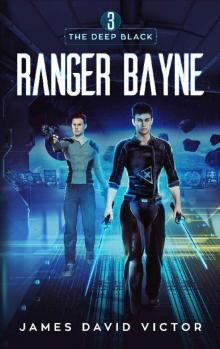 Ranger Bayne
Ranger Bayne Valyien Boxed Set 3
Valyien Boxed Set 3 Mimic's Last Stand
Mimic's Last Stand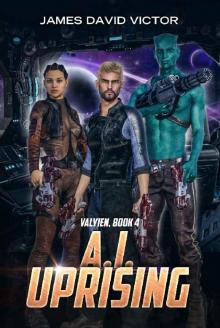 A. I. Uprising (Valyien Book 4)
A. I. Uprising (Valyien Book 4)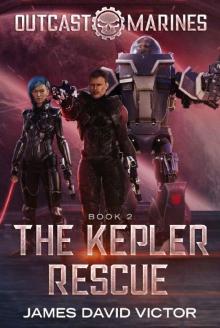 The Kepler Rescue
The Kepler Rescue Last Stand Boxed Set
Last Stand Boxed Set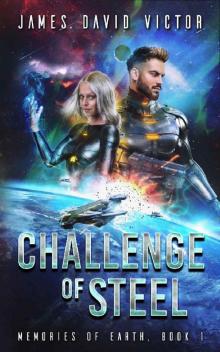 Challenge of Steel
Challenge of Steel Mimic Saves Her People
Mimic Saves Her People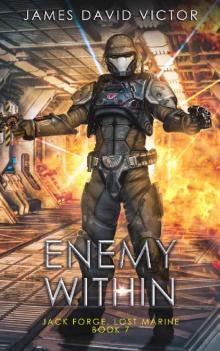 Enemy Within (Jack Forge, Lost Marine Book 7)
Enemy Within (Jack Forge, Lost Marine Book 7)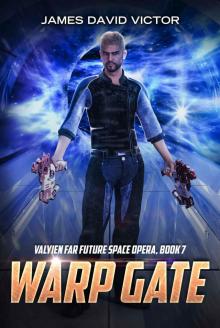 Warp Gate (Valyien Far Future Space Opera Book 7)
Warp Gate (Valyien Far Future Space Opera Book 7)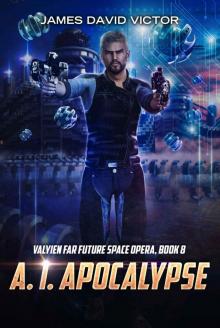 A. I. Apocalypse (Valyien Far Future Space Opera Book 8)
A. I. Apocalypse (Valyien Far Future Space Opera Book 8) Captain Bayne Boxed Set
Captain Bayne Boxed Set Blue Star Marine Boxed Set
Blue Star Marine Boxed Set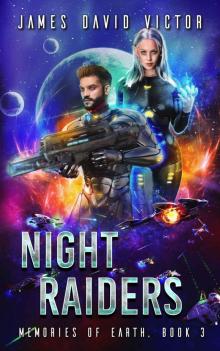 Night Raiders
Night Raiders Conquest of Earth
Conquest of Earth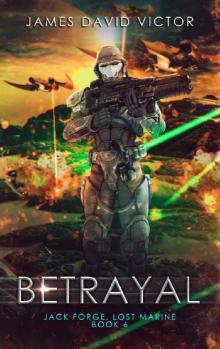 Betrayal (Jack Forge, Lost Marine Book 6)
Betrayal (Jack Forge, Lost Marine Book 6) Sharpe End
Sharpe End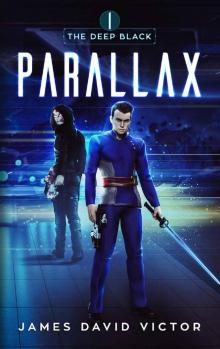 Parallax
Parallax Invasion- Proxima
Invasion- Proxima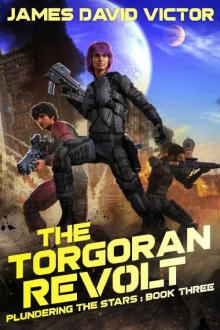 The Torgoran Revolt (Plundering the Stars Book 3)
The Torgoran Revolt (Plundering the Stars Book 3) Outcast Marines series Boxed Set 2
Outcast Marines series Boxed Set 2 Outcast Marines series Boxed Set
Outcast Marines series Boxed Set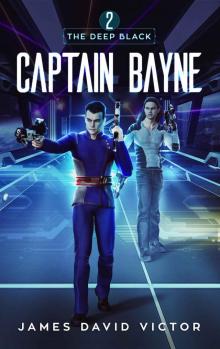 Captain Bayne
Captain Bayne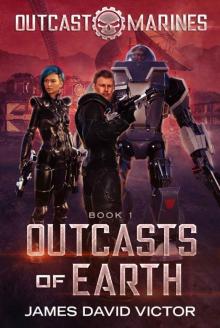 Outcasts of Earth (Outcast Marines Book 1)
Outcasts of Earth (Outcast Marines Book 1)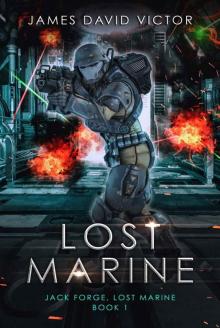 Lost Marine
Lost Marine Eternal Enemy
Eternal Enemy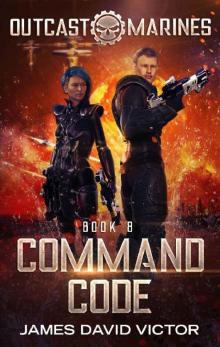 Command Code
Command Code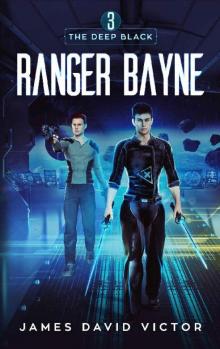 Ranger Bayne (The Deep Black Book 3)
Ranger Bayne (The Deep Black Book 3) Mimic: The Space Shifter Chronicles Boxed Set (Books 1 - 9)
Mimic: The Space Shifter Chronicles Boxed Set (Books 1 - 9) The Deep Black Space Opera Boxed Set
The Deep Black Space Opera Boxed Set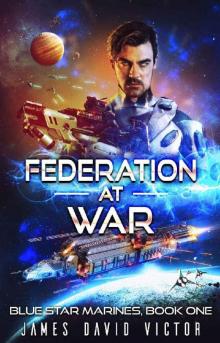 Federation at War (Blue Star Marines Book 1)
Federation at War (Blue Star Marines Book 1)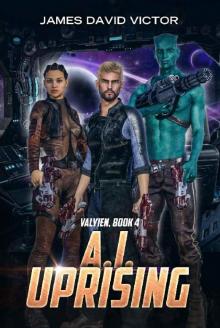 AI Uprising
AI Uprising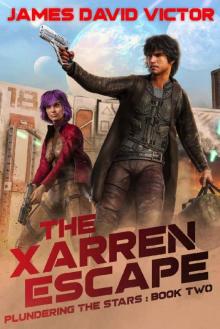 The Xarren Escape (Plundering the Stars Book 2)
The Xarren Escape (Plundering the Stars Book 2) Valyien Boxed Set 1
Valyien Boxed Set 1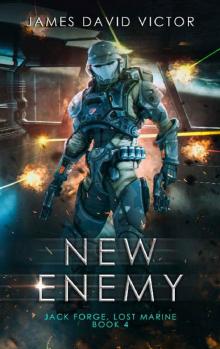 New Enemy (Jack Forge, Lost Marine Book 4)
New Enemy (Jack Forge, Lost Marine Book 4) Alien Legacy
Alien Legacy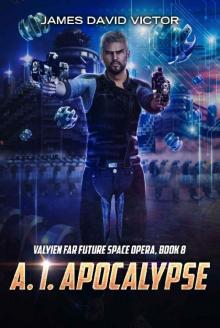 A I Apocalypse
A I Apocalypse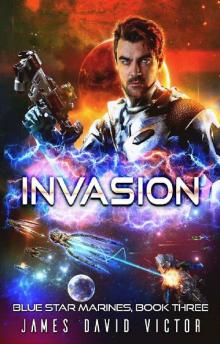 Invasion (Blue Star Marines Book 3)
Invasion (Blue Star Marines Book 3)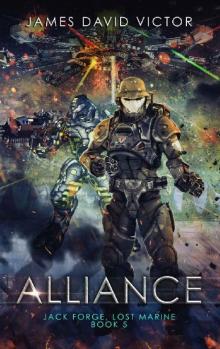 Alliance (Jack Forge, Lost Marine Book 5)
Alliance (Jack Forge, Lost Marine Book 5)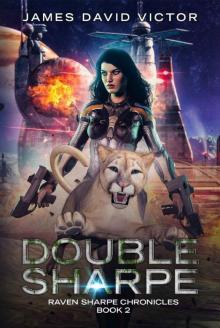 Double Sharpe (Raven Sharpe Chronicles Book 2)
Double Sharpe (Raven Sharpe Chronicles Book 2) Metal Warrior: Steel Cage (Mech Fighter Book 6)
Metal Warrior: Steel Cage (Mech Fighter Book 6)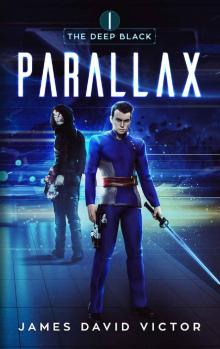 Parallax (The Deep Black Book 1)
Parallax (The Deep Black Book 1)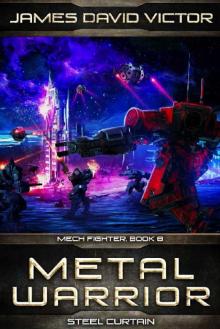 Metal Warrior: Steel Curtain (Mech Fighter Book 8)
Metal Warrior: Steel Curtain (Mech Fighter Book 8)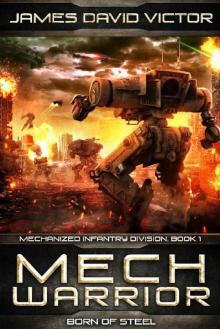 Mech Warrior: Born of Steel (Mechanized Infantry Division Book 1)
Mech Warrior: Born of Steel (Mechanized Infantry Division Book 1) Outcast Marines Boxed Set
Outcast Marines Boxed Set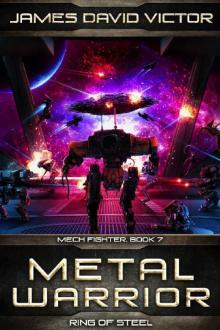 Metal Warrior: Ring of Steel (Mech Fighter Book 7)
Metal Warrior: Ring of Steel (Mech Fighter Book 7) The Elarri Heist (Plundering the Stars Book 1)
The Elarri Heist (Plundering the Stars Book 1) Forged Under Siege (Jack Forge, Fleet Marine Book 6)
Forged Under Siege (Jack Forge, Fleet Marine Book 6)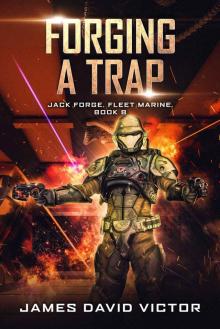 Forging a Trap (Jack Forge, Fleet Marine Book 8)
Forging a Trap (Jack Forge, Fleet Marine Book 8) Daikon (ESS Space Marines Book 2)
Daikon (ESS Space Marines Book 2)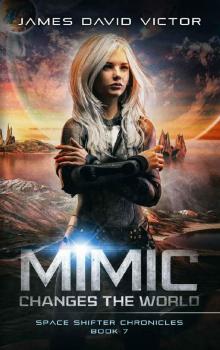 Mimic Changes the World
Mimic Changes the World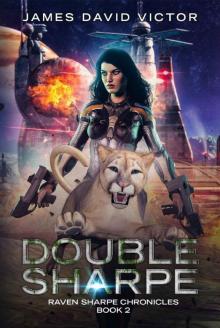 Double Sharpe
Double Sharpe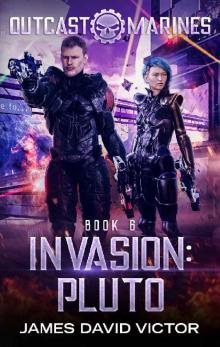 Invasion- Pluto
Invasion- Pluto Mimic and the Fight for Freedom (Space Shifter Chronicles Book 3)
Mimic and the Fight for Freedom (Space Shifter Chronicles Book 3)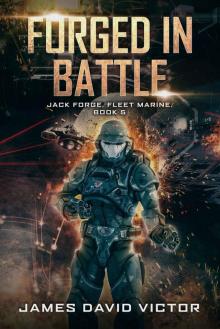 Forged in Battle (Jack Forge, Fleet Marine Book 5)
Forged in Battle (Jack Forge, Fleet Marine Book 5) Lykos (ESS Space Marines Book 6)
Lykos (ESS Space Marines Book 6)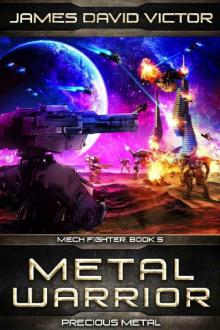 Metal Warrior: Precious Metal (Mech Fighter Book 5)
Metal Warrior: Precious Metal (Mech Fighter Book 5) Forged to Hunt
Forged to Hunt Earth Space Service Space Marines Boxed Set
Earth Space Service Space Marines Boxed Set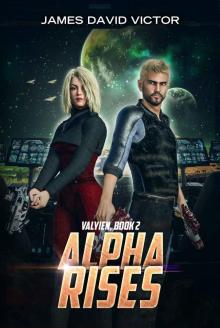 Alpha Rises
Alpha Rises Power of the Seers (Dragon Oracle Book 4)
Power of the Seers (Dragon Oracle Book 4)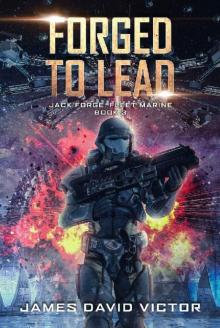 Forged to Lead (Jack Forge, Fleet Marine Book 3)
Forged to Lead (Jack Forge, Fleet Marine Book 3)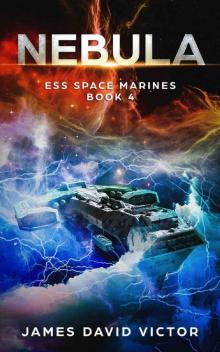 Nebula (ESS Space Marines Book 4)
Nebula (ESS Space Marines Book 4)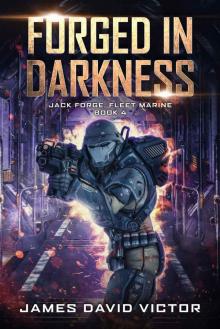 Forged in Darkness
Forged in Darkness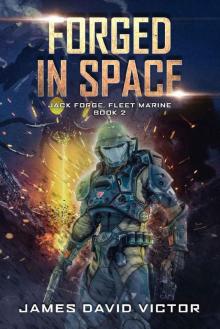 Forged in Space
Forged in Space Metal Warrior: Steel Trap (Mech Fighter Book 3)
Metal Warrior: Steel Trap (Mech Fighter Book 3) Mimic and the Space Engineer Boxed Set, Books 1 - 3
Mimic and the Space Engineer Boxed Set, Books 1 - 3 World Breaker Boxed Set (ESS Space Marines Omnibus Book 3)
World Breaker Boxed Set (ESS Space Marines Omnibus Book 3)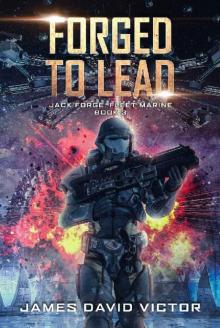 Forged to Lead
Forged to Lead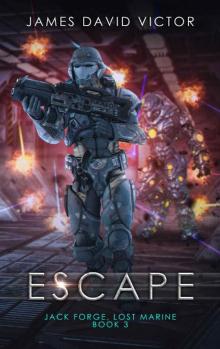 Escape (Jack Forge, Lost Marine Book 3)
Escape (Jack Forge, Lost Marine Book 3) Forged Under Siege
Forged Under Siege Jack Forge, Fleet Marine Boxed Set (Books 1 - 9)
Jack Forge, Fleet Marine Boxed Set (Books 1 - 9)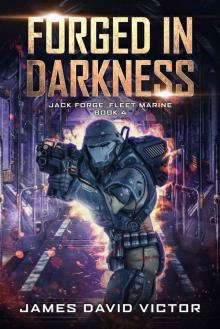 Forged in Darkness (Jack Forge, Fleet Marine Book 4)
Forged in Darkness (Jack Forge, Fleet Marine Book 4)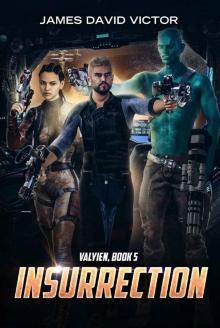 Insurrection
Insurrection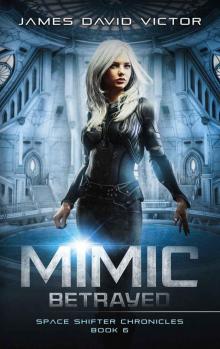 Mimic Betrayed (Space Shifter Chronicles Book 6)
Mimic Betrayed (Space Shifter Chronicles Book 6)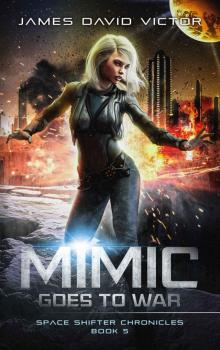 Mimic Goes to War (Space Shifter Chronicles Book 5)
Mimic Goes to War (Space Shifter Chronicles Book 5)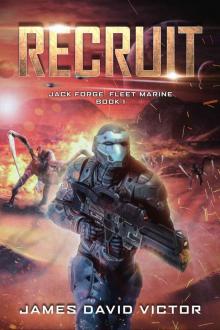 Recruit (Jack Forge, Fleet Marine Book 1)
Recruit (Jack Forge, Fleet Marine Book 1)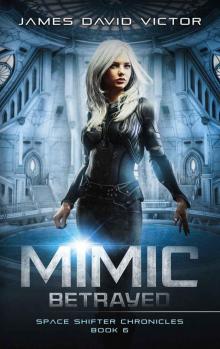 Mimic Betrayed
Mimic Betrayed Power of the Seers
Power of the Seers Mimic and the Journey Home (Space Shifter Chronicles Book 2)
Mimic and the Journey Home (Space Shifter Chronicles Book 2)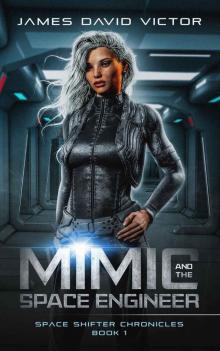 Mimic and the Space Engineer (Space Shifter Chronicles Book 1)
Mimic and the Space Engineer (Space Shifter Chronicles Book 1) Recruit
Recruit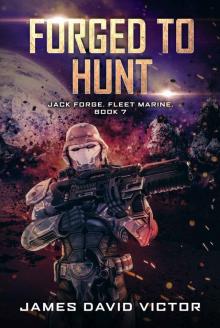 Forged to Hunt (Jack Forge, Fleet Marine Book 7)
Forged to Hunt (Jack Forge, Fleet Marine Book 7)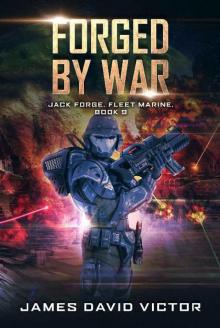 Forged by War (Jack Forge, Fleet Marine Book 9)
Forged by War (Jack Forge, Fleet Marine Book 9) Pursuit (Silver Cane Book 1)
Pursuit (Silver Cane Book 1) Zenith (ESS Space Marines Book 1)
Zenith (ESS Space Marines Book 1) Star Chaser (ESS Space Marines Book 3)
Star Chaser (ESS Space Marines Book 3)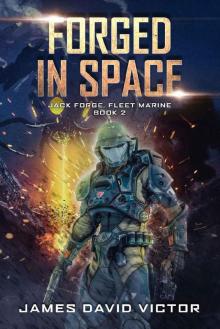 Forged in Space (Jack Forge, Fleet Marine Book 2)
Forged in Space (Jack Forge, Fleet Marine Book 2)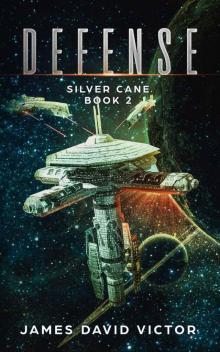 Defense (Silver Cane Book 2)
Defense (Silver Cane Book 2) Infiltrate (Silver Cane Chronicles Book 3)
Infiltrate (Silver Cane Chronicles Book 3)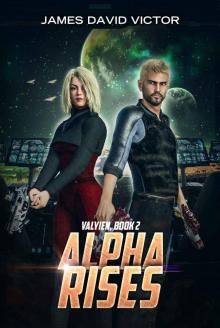 Alpha Rises (Valyien Book 2)
Alpha Rises (Valyien Book 2)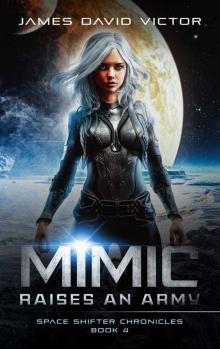 Mimic Raises an Army
Mimic Raises an Army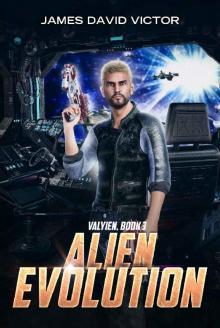 Alien Evolution (Valyien Book 3)
Alien Evolution (Valyien Book 3)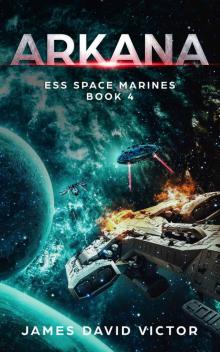 Arkana (ESS Space Marines Book 4)
Arkana (ESS Space Marines Book 4) Lykos
Lykos Forging a Trap
Forging a Trap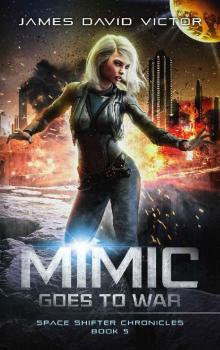 Mimic Goes to War
Mimic Goes to War Earth Space Service Boxed Set: Books 1 - 3 (ESS Space Marines Omnibus)
Earth Space Service Boxed Set: Books 1 - 3 (ESS Space Marines Omnibus) Stranded (ESS Space Marines Book 7)
Stranded (ESS Space Marines Book 7)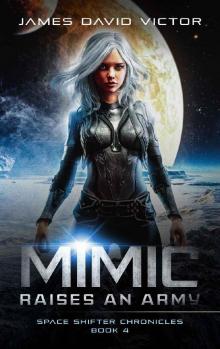 Mimic Raises an Army (Space Shifter Chronicles Book 4)
Mimic Raises an Army (Space Shifter Chronicles Book 4) Alien Evolution
Alien Evolution